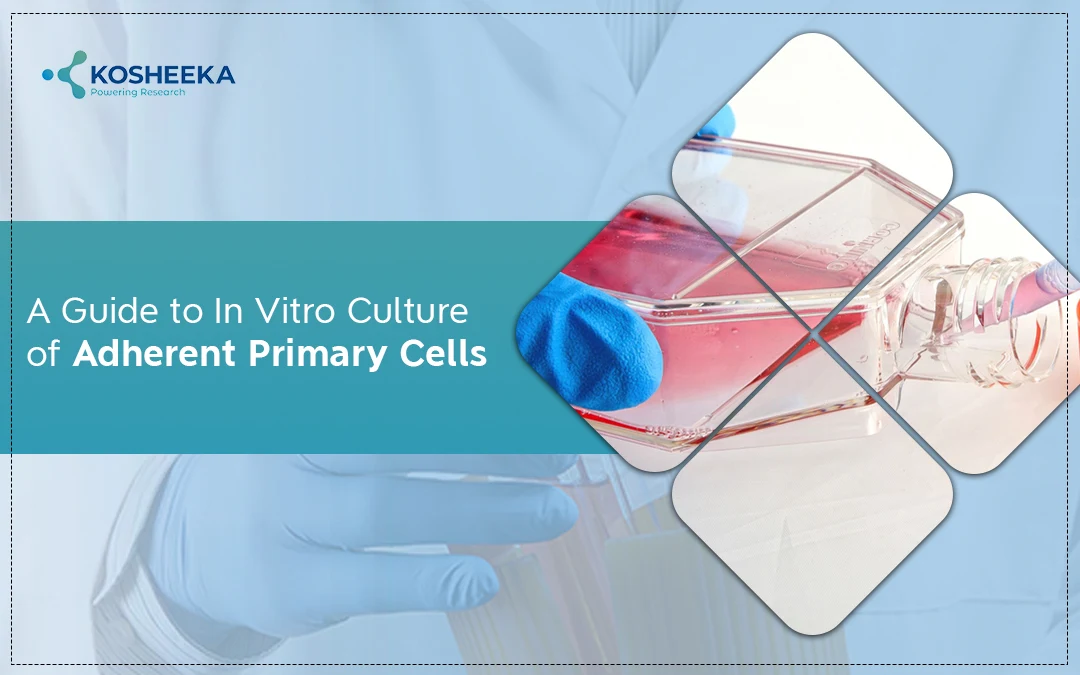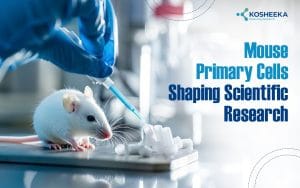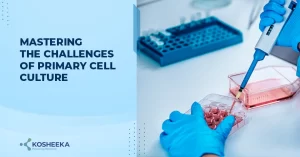The tissue-based characteristics of primary cells make them accurate in vitro models for biomedical research. Most of them are adherent in nature. They are valuable for evaluating cell genotype, phenotype, signaling, and drug response with the closest resemblance to the in vivo tissue. Therefore, primary cell culture holds great value for in vitro studies. However, their use is challenging due to the problems associated with their culture. Their short lifespan and need for attachment limit the cell quantity available for experimentation. It also mandates meticulous and timely planning of experiments to estimate cell response. The delicate handling necessary for primary cell cultivation restricts their use to studies preceding preclinical exploration. Their repeated isolation or procurement also adds to the financial burden. Therefore, this blog dives into primary cells, particularly adherent cells, and their culture to aid researchers in their in vitro studies.
Types of Primary Cells
Scientists have classified two types of primary cell culture based on their need for substrate attachment:
- Adherent Culture: They adhere to an extracellular matrix (ECM) on a flask or dish. They assume a non-spherical shape after substrate attachment. Their survival and proliferation depend on their attachment to the ECM. These are also known as anchorage-dependent cells. Due to their need for ECM, they grow in monolayers. The majority of the Primary Cells are adherent. Based on morphological features and origin, they can be further categorized into the following:
- Fibroblasts: They synthesize ECM and exhibit a spindle-shaped morphology.
- Epithelial Cells: They assume a polygonal shape and constitute the outer covering of organs
- Endothelial Cells: They belong to blood vessels and have cobblestone morphology.
- Neurons: They are a part of the nervous system and are characterized by long processes (dendrites and axons).
- Suspension Culture: They do not attach to the surface of flasks and are anchorage-independent. They float freely in the medium and grow either as single cells or in clumps. Among primary cells, hematopoietic stem cells and immune cells grow as suspension cultures.
Limitations of Adherent Cell Culture
Primary Cell Definition includes a cell population isolated from tissues exhibiting limited population doublings. Adherent culture, common in primary cell culture, has several benefits. However, it also faces many drawbacks that often redirect researchers towards immortalized cell lines:
- Their subculture requires an additional step of trypsinization to dissociate them from the culture dish. It increases the time for subculture, not to mention the requirement for more reagents.
- The amount of surface area of the culture dish limits the growth of adherent cells. Therefore, the size of tissue flasks or their number should be increased to obtain a larger cell quantity. This practice also elevates the amount of labor to subculture in comparison to suspension cultures that can be cultivated in larger quantities in smaller or fewer culture dishes.
- The scalability of adherent culture has constraints regarding its large-scale production. Unlike suspension platforms, the number of adherent cells per unit surface area of the culture dish is small. Nowadays, multiplayer stacked vessels are available in the market to scale up the production. However, it lacks the ease of scaling up suspension cultures.
Tips During Adherent Cultures
The attachment-restricted growth of adherent cultures mandates their proper handling. Here are a few tips to keep in mind while maintaining such adherent primary cells:
Surface Attachment
Poor attachment to the culture dish is a frequent problem in vitro culture. Although it primarily alludes to contamination, coating could also contribute to the same. Cells may require specific proteins on the culture dish to enhance their attachment. Such coatings typically involve proteins like collagen, fibronectin, laminin, etc., that represent the in vivo ECM. Furthermore, the amount of cells subcultured also impacts their adherence. A low cell number in a bigger culture dish can impede adherence. Therefore, in case of poor attachment, grow cells in smaller dishes.
Trypsinization
The trypsinization step involves treating cultures with trypsin and EDTA. Trypsin- a serine protease cleaves lysine and arginine at their C-terminal. It digests the adherent proteins like cadherin and integrin, which are responsible for cell-ECM interactions. On the other hand, EDTA chelates calcium ions required for the attachment. However, this 5-10 minute procedure fails to dissociate monolayer. It could happen due to the following reasons:
- The residual medium interferes with enzymatic activity.
- Trypsin in the solution has deactivated.
- Highly confluent cultures prolong detachment time.
- Inadequate pH of the trypsin solution.
- Cells have detached but might need a gentle tap to observe visible dissociation.
- Trypsin is not warmed to room temperature.
- Cell differentiation that typically occurs at higher density.
Researchers often extend the incubation time in trypsin, which can reduce their viability. Therefore, exercise caution, such as subculturing at right confluency using fresh trypsin, pre-warming trypsin, properly washing cells with buffer before adding trypsin, etc.
Calcium and Magnesium
Calcium and magnesium are two critical elements that enhance cell surface adhesion. Therefore, ensure their adequate concentration in the medium for proper cellular attachment and growth.
Oxygen Availability
Adherent cells are present close to the surface, which minimizes their contact with oxygen. Therefore, it is advised to use adequate media volumes that maintain gas exchange while also providing sufficient nutrients.
Gentle Handling
Cell membranes comprise adherent proteins that promote cell-ECM interaction. Harsh mixing reduces viability and damages membrane proteins that might disrupt their surface attachment. The involvement of proteins also signifies the importance of pH and temperature.
Applications of Adherent Cell Culture
Despite limitations and the problems faced during in vitro cultivation, adherent cell culture has been popular in biomedical research. Several scaffolds and hydrogels have been employed to direct the Primary Cell Culture. For instance, in regenerative medicine, the properties of the scaffold can define the lineage that mesenchymal stem cells differentiate into. Furthermore, hydrogel-based skin grafts using keratinocytes have been formulated to treat injuries and burns. Such applications have been growing owing to their therapeutic benefits, which have also spurred the in vitro culture of adherent cells.
Product-Related Queries, Or Partnership Inquiries
Conclusion
Primary cell culture is a core component of biomedical research due to its physiological relevance. Adherent culture is more common among primary cells. Aside from their short life span, adherent primary cell culture is challenging in several ways. Researchers must navigate and troubleshoot issues in the culture such as cell attachment, enzymatic dissociation, and cell viability. Despite these limitations, adherent culture has thrived particularly in the field of tissue engineering. Utilizing scaffolds, it can be transformed into tissue grafts. Kosheeka facilitates such scientific exploration by providing primary cells from various tissues and species. The team of Kosheeka also offers guidance in adherent cell culture to assist in your study.
FAQ’s
Q- Why are primary cells preferred over immortalized cell lines in certain studies?
Primary cells retain the genotype and phenotype of their tissue of origin, making them more physiologically relevant for studying cell behavior, drug responses, and disease mechanisms compared to genetically altered immortalized lines.
Q- What causes poor attachment of adherent cells during culture?
Poor attachment can result from contamination, inadequate coating of the culture dish, low cell density, or suboptimal medium composition. Using ECM proteins like collagen or fibronectin, adjusting dish size, optimizing media, and ensuring appropriate physical parameters can improve adherence.
Q- How can I improve the efficiency of trypsinization during subculture?
Ensure the right confluency, use fresh and pre-warmed trypsin, wash cells thoroughly before adding trypsin, and monitor pH.
Q- What are the key factors to consider when scaling up adherent cell cultures?
Unlike suspension cultures, adherent cells require more surface area and meticulous handling, making scalability more complex. Surface area, oxygen exchange, and gentle handling are crucial.



